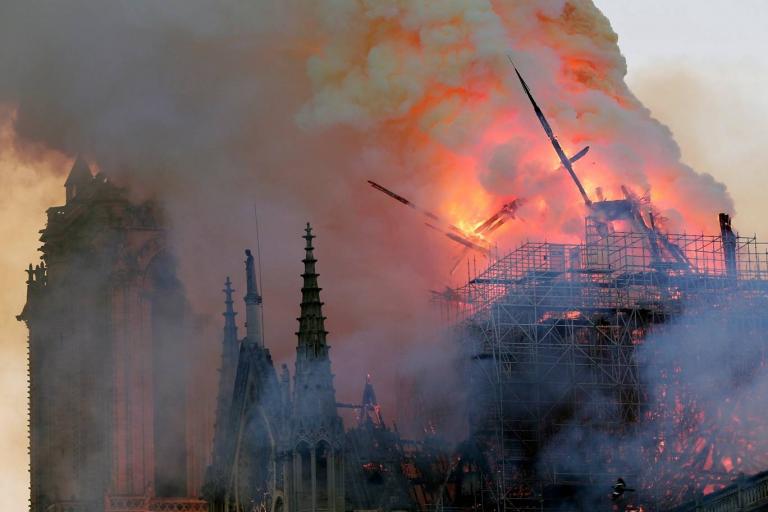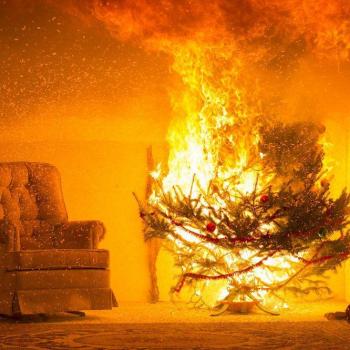The Notre Dame Cathedral has been reduced to ashes. It’s a loss both literal and symbolic; the death of an icon for some, and to others, the tragic fall of a true church home. While church is “not a building,” this building, for some, was THE church. It embodied history and tradition; art and beauty; sacred space and narrative; and, of its own accord, stood as a landmark in the Paris skyline.
Three Louisiana churches burned to the ground last week. These, too, were losses both literal and symbolic. While they were churches most had never heard of, the sinister act of arson that brought them down—perpetuated by a white supremacist—reveals a side of our nation’s identity with which we don’t like to reckon. The fires represent the dark underside of racism in our broader culture. At the same time, the losses were literal and visceral for those who called these churches home.
Working in disaster relief, I’m familiar with the dilemma of “competing tragedies.” When there is a devastating cyclone in Mozambique, and record flooding in the American Midwest at the same time, which story do you tell? The one with the higher death toll, or the one closer to home? When there is a wildfire on the west coast and a hurricane on the east—where do you go first? To the community with greater need, or to the one with infrastructure prepared to receive aid?
Which tragedy is most tragic? Whose needs are greater? Where are resources best spent in times of suffering?
These are questions that people in my field struggle with every day. And the short answer is: there is no answer. There is just ongoing discernment, intentional stewardship and a commitment to make the most of what we have and do the best work we can in the most places. The work of responding to tragedy is case-by-case, day-by-day, always urgent AND always important.
Also, it is complicated. And that’s what I want to remind us today, as the newsfeed responds to one tragedy with reminders of another. As the game of calling “but what about this??” more loudly than “what about that??” turns into a digital shouting match of headlines, donation campaigns and human interest angles. We remember that, in God’s time, two things can be true at once.

There can be heartbroken worshipers in both Paris and Louisiana; a gathering of the faithful who look ahead to Easter and wonder where they will go to celebrate the resurrection, and what God might bring out of these literal ashes. There can be more than one tragedy: that wrought by nature or accident, and that rendered intentionally by human evil. There can be two kinds of heartbreak: the kind that grieves for the loss of history, and the kind that is deeply personal and raw.
All of these things can be true at once.
Somewhere along the line, we have bought into an assumption that humans only have limited bandwidth for empathy and compassion. Perhaps that is true, given our near-manic consumption of news and information and stuff on any given day. But if we lack capacity to care about multiple things at once, that limitation is a sickness we’ve brought on ourselves; and therefore, one that can be cured. Perhaps that’s a post for another day, but it bears mentioning in the meantime.
The truth is, we bear the image of God. As those image-bearers, we are gifted with infinite capacity to hold many things at once. And sometimes, the multiple truths we hold amount to impossible paradox.
For instance: it can be true that the loss of Notre Dame is tragic; the death of a truly beautiful thing in a world that needs more beautiful things. At the same time: it cannot be denied that a cathedral is a problematic construct. A monument to excess, and a fortress for the systemic patriarchy that has done immeasurable harm over centuries.
Can you hear that? Will you hear that with the compassion I mean it to contain? I am not over here cheering “let the mother****** burn!” This is a tragedy, and I recognize it as such. But let’s not pretend it is simple. A structure of that magnitude represents both the best and worst of faith. It is sanctuary, beauty, art and holy ground; it is also power and grandeur and privilege. To see Notre Dame fall is, in many ways, emblematic of the Church itself in this century. Fraught with paradox; holding both beauty and pain; housing the best of the sacred, and the worst of the profane.
When that big paradox of a thing falls, it is a thing to be mourned, for sure. But perhaps it is also an invitation to envision what we image-bearers of God might build in its place. Or rather, in many places.
Two things can be true at once. It is possible to mourn a cathedral in France, and also recognize that all human constructs crumble, eventually.
Two things can be true at once. It is possible to mourn a grand iconic church in Paris, and a small family church (or churches) in Louisiana. But if we mourn the ornate, the iconic and the marvelous with greater fervor than we grieve a humble structure, then perhaps we have missed the memo about what church is for.
These parallel losses are not a contest in suffering; but they do represent, perhaps, a moment to check what we value and why. What we hold most sacred, and where our treasure will be a generation from now.
There are multiple tragedies in our lives, every day. The personal and the corporate; the micro and the macro; the existential and the visceral. Remember that we hold the capacity to bear it all with love. In the midst of this Holy Week, we bear witness to the ashes; and what joy might come with the morning.
A church is burning
The flames rise higher
Like hands that are praying, aglow in the sky
Like hands that are praying, the fire is saying,
“You can burn down my churches but I shall be free.”












